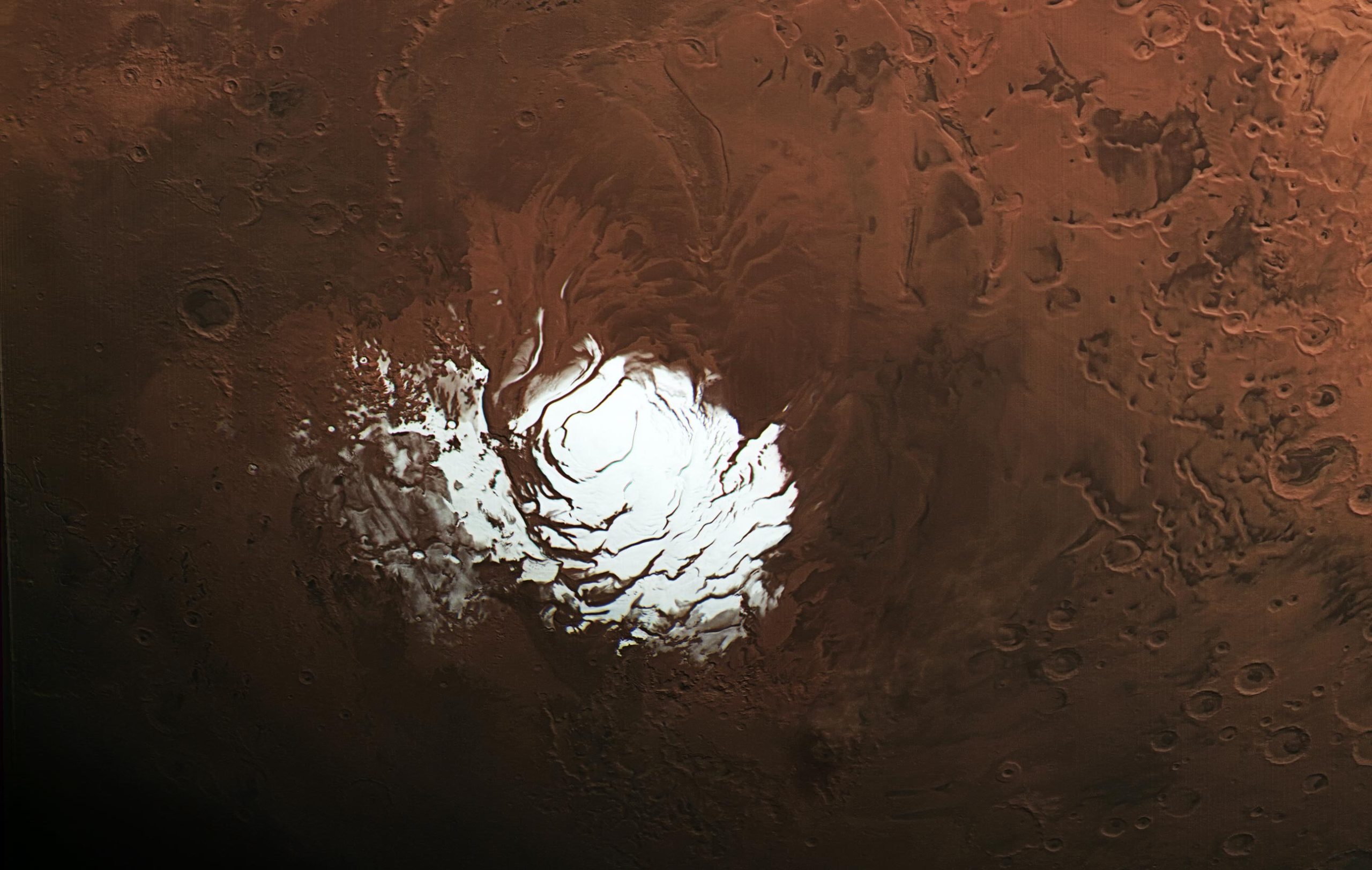
Research led by The University of Texas at Austin found that a 2018 discovery of liquid water under the Red Planet’s south polar cap is most likely just radar reflecting from volcanic rock.
Liquid water previously detected under Mars’ ice-covered south pole is probably just a dusty mirage, according to a new study of the red planet led by researchers at The University of Texas at Austin.Scientists in 2018 had thought they were looking at liquid water when they saw bright radar reflections under the polar cap.The researchers think their conclusion — volcanic rock buried under ice — is a more plausible explanation for the 2018 discovery, which was already in question after scientists calculated the unlikely conditions needed to keep water in a liquid state at Mars’ cold, arid south pole.The south polar mirage dissolved when Grima added an imaginary global ice sheet across a radar map of Mars.A radar map of Mars as seen through a mile of ice.This caused volcanic plains (seen in red) to reflect radar in a manner that resembled liquid water.
The finding challenges a 2018 study that appeared to find liquid water under Mars’ south polar cap.
Grima noticed bright reflections, just like those seen in the south pole but scattered across all latitudes.Although there may not be liquid water trapped under the southern polar cap, there is plenty of water ice on Mars, including in the thick polar caps.Isaac Smith, a Mars geophysicist at York University, believes the bright radar signatures are a kind of clay made when rock erodes in water.In 2021, Smith, who was not part of either study, found that Earth-based clays reflected radar brightly, just like the bright spots in the 2018 south pole study.
“I think the beauty of Grima’s finding is that while it knocks down the idea there might be liquid water under the planet’s south pole today, it also gives us really precise places to go look for evidence of ancient lakes and riverbeds and test hypotheses about the wider drying out of Mars’ climate over billions of years,” he said.Grima’s map is based on three years of data from MARSIS, a radar instrument launched in 2005 aboard the European Space Agency’s Mars Express that has accumulated tremendous amounts of information about Mars.Grima and Smith are now working on proposed missions to find water on Mars with radar, both as a resource for future human landing sites and to search for signs of past life.